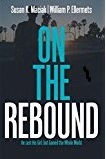Reprinted by blog writer Susan K. Maciak with permission from Advanced Asset Management LLC (See more at aamllc.com)
Marketers, take note: Casual and carefree, millennials will be a big chunk of the population  in just a few years.
in just a few years.
The first generation to come of age in the new millennium (those now under 35 years old) will make up 70 percent of the market soon.
Unlike Baby Boomers who ruled the second half of the 20th Century, millennials might be a harder sell. Personal possessions don’t matter as much to this new, young crowd of consumers, so what will motivate them to save a few bucks for later? Owning a BMW, a motorbike or a mansion with a diamond-shaped swimming pool is not a major goal.
Millennials like experiences. Many young adults today, experts say, aren’t as likely to be saving for a down-payment on a big house or a status-symbol like a hot car. An apartment in the city, along with Uber, Lyft or public transportation, will probably be more their style. Most millennials might save money, instead, for something more adventurous, like admission tickets to the upcoming Olympics or a Caribbean cruise.
Marketers beware. This new generation of Americans may not care so much about walk-in closets or expensive wardrobes, but may prefer flying to New York City occasionally to splurge on tickets to a Broadway Show and spend the night in a tony Times Square hotel. Life experiences motivate them more than material things. A retirement savings account isn’t as appealing as an IRA for later-in-life enjoyment.
What else motivates millennials? Millennials like to be “in on” things. That makes information a value-added asset for advertisers. Companies that use technology, such as websites, blogs, texts and social media, create customer loyalty by keeping this group up to speed on current interests. Popular info-topics could range from saving money for travel to planning special events, or focusing on anything new (food, restaurants, gadgets, medical advancements, self-improvement programs, etc.). Other motivators for millennials, include:
- Appreciation (recognition and rewards)
- Personal growth and fitness, social and environmental consciousness
- Sense of belonging (clubs, special interest groups, or membership programs)
- Assistance in solving problems (help desks, product demonstrations, how-to articles)
In a nutshell: Typical millennials can be convinced to save, invest, buy or believe in something by motivating them with experiences, events and ideas that are informative, helpful and rewarding.
Manage Your Money . . . financial facts for a brighter future by: Advancd Asset Management LLC Follow our financial blog: aamllc.com Ronald Van Surksum, CFP|4555 Wilson Ave SW – Suite 2 |Grandville, MI 49418
For permission to reprint: Blog writer Susan K. Maciak at ask@cameo100.com
 ou need to reach out on a regular basis to both current customers and potential, new ones. Putting communication ideas into an annual plan is one way to make sure you stay in touch.
ou need to reach out on a regular basis to both current customers and potential, new ones. Putting communication ideas into an annual plan is one way to make sure you stay in touch.
 : “Job Shopping: Don’t Settle for a Job that Sucks.” This self-help manual is a favorite by Susan K. Maciak, former school district career program director, now independent career and corporate consultant.
: “Job Shopping: Don’t Settle for a Job that Sucks.” This self-help manual is a favorite by Susan K. Maciak, former school district career program director, now independent career and corporate consultant. Do you have an idea to share, a new concept to convey, or products and services to sell?
Do you have an idea to share, a new concept to convey, or products and services to sell? High school and college students love On The Rebound: He Lost his Girl but Gained the Whole World.
High school and college students love On The Rebound: He Lost his Girl but Gained the Whole World. in just a few years.
in just a few years.





 Published by Susan K. Maciak, CAMEO Career & Corporate Consulting LLC | cameo100.com | For permission to reprint, ask@cameo100.com
Published by Susan K. Maciak, CAMEO Career & Corporate Consulting LLC | cameo100.com | For permission to reprint, ask@cameo100.com